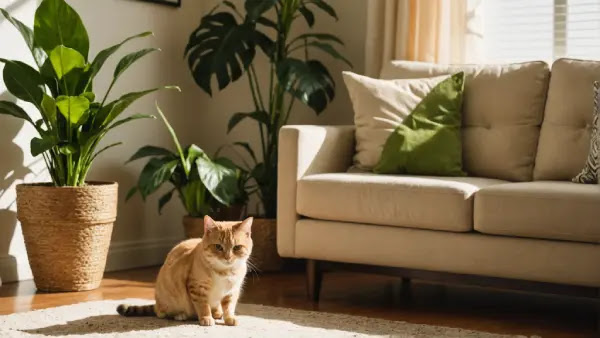How to Protect Your Plants with Natural Cat Repellents
Introduction: The Challenge of Protecting Plants from Cats
Why Cats Are Attracted to Houseplants
Understanding why cats are drawn to houseplants is the first step to addressing the issue. Cats are naturally curious creatures, and plants often pique their interest with their textures, movement, and scents. Some cats chew on plants to satisfy a nutritional craving, particularly for fiber, while others see soil as the perfect digging medium. Recognizing these behaviors can help you identify strategies to deter them while catering to their natural instincts.
The Risks of Cats and Plants Coexisting
When cats and plants share the same space, both face risks. Cats can cause significant damage to plants by chewing leaves, digging roots, or knocking over pots. On the other hand, many common houseplants—like pothos, lilies, and philodendrons—are toxic to cats if ingested. These dangers highlight the need for pet-safe solutions that protect plants while safeguarding cats from harm.
Natural Cat Repellents That Work
Natural cat repellents are an excellent way to keep your plants safe without exposing your pets to harmful chemicals. Cats tend to dislike strong citrus scents, making orange or lemon peels a great deterrent. A diluted vinegar spray applied to plant pots can also keep curious paws at bay. Cayenne pepper sprinkled on the soil is another effective option, as the spicy smell deters cats without harming your plants. These natural methods are easy to implement and safe for both pets and plants.
DIY Cat Repellent Ideas for Your Plants
If you prefer a hands-on approach, DIY cat repellents are simple and cost-effective. Essential oils like lavender, eucalyptus, or citronella can be mixed with water to create a spray that repels cats while leaving a pleasant scent. Aluminum foil or double-sided tape placed around pots can discourage digging, as cats dislike the texture. Even small adjustments, like adding decorative stones over the soil, can work wonders in preventing feline mischief.
Tips for Cat-Proofing Your Indoor Garden
Beyond repellents, practical changes can help protect your plants. Consider elevating your greenery using shelves, hanging planters, or wall-mounted pots to keep them out of your cat’s reach. Creating plant-free zones, such as in rooms with doors or high surfaces, can also help. For floor-level plants, using heavy pots that cats can’t tip over and securing soil with a top layer of rocks or mesh can be effective deterrents.
Balancing a Cat-Friendly and Plant-Friendly Home
Creating harmony between your love for plants and your feline companions is all about balance. Offering your cats alternatives, like a pot of cat grass or engaging toys, can redirect their attention away from your plants. Training and positive reinforcement are key; rewarding your cat for staying away from plants reinforces good behavior. With patience and creativity, you can build a home that’s both plant-friendly and cat-friendly.
Conclusion: Protecting Plants and Loving Your Pets
By understanding your cat’s behavior and implementing natural, safe repellents, you can protect your plants without compromising your pet’s safety. Whether it’s through clever DIY solutions or practical changes to your home’s layout, a peaceful coexistence between plants and cats is entirely achievable. Have any tried-and-true tips or questions about keeping cats and plants together? Share your thoughts in the comments below!















0 comments:
Post a Comment